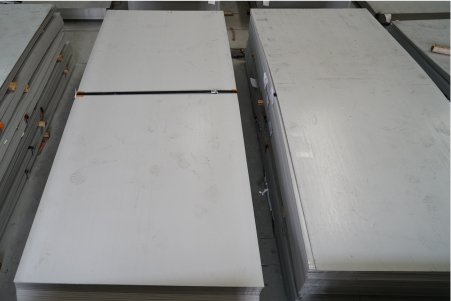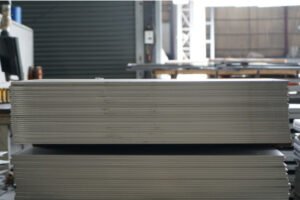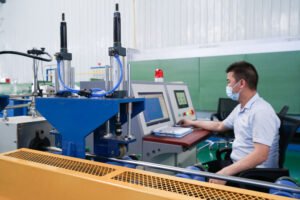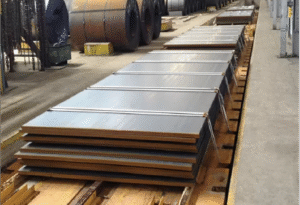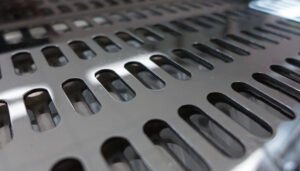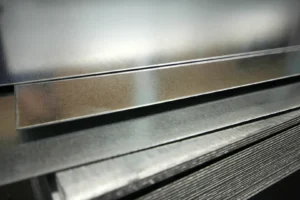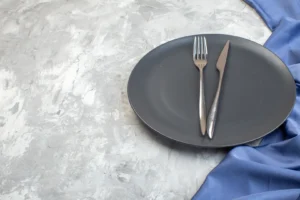Fabricating Stainless Steel Plates: A Guide to Cutting, Forming, & Joining
Struggling with stainless steel fabrication? The material's strength makes it tough to work with, risking costly errors. Precision techniques are the key to success and superior results.
Mastering stainless steel plate fabrication involves selecting the right cutting method (like laser or plasma), understanding the material's forming properties to prevent cracking, and using appropriate joining techniques such as TIG or MIG welding. Precision and expertise are crucial for optimal results.

As the Global Business Director at MFY, I've seen firsthand how the demand for high-performance materials has grown. Industries from construction to aerospace rely on the durability and corrosion resistance of stainless steel. But unlocking its full potential isn't just about sourcing quality material; it's about the skill and technology used to shape it. A flawless cut, a perfect bend, a strong weld—these are not just process steps. They are the foundation of product integrity and operational efficiency. Let's dive into the essential techniques that separate standard work from world-class fabrication.
How Can You Effectively Cut Stainless Steel Plates?
Need clean cuts on tough stainless steel? Traditional methods can be slow and imprecise, causing material waste. Advanced cutting technologies offer a precise and efficient solution.
Effectively cutting stainless steel plates requires choosing a method based on thickness and desired precision. Laser cutting offers high accuracy for thin plates, while plasma and waterjet cutting are better for thicker sections, ensuring clean edges and minimal heat distortion.
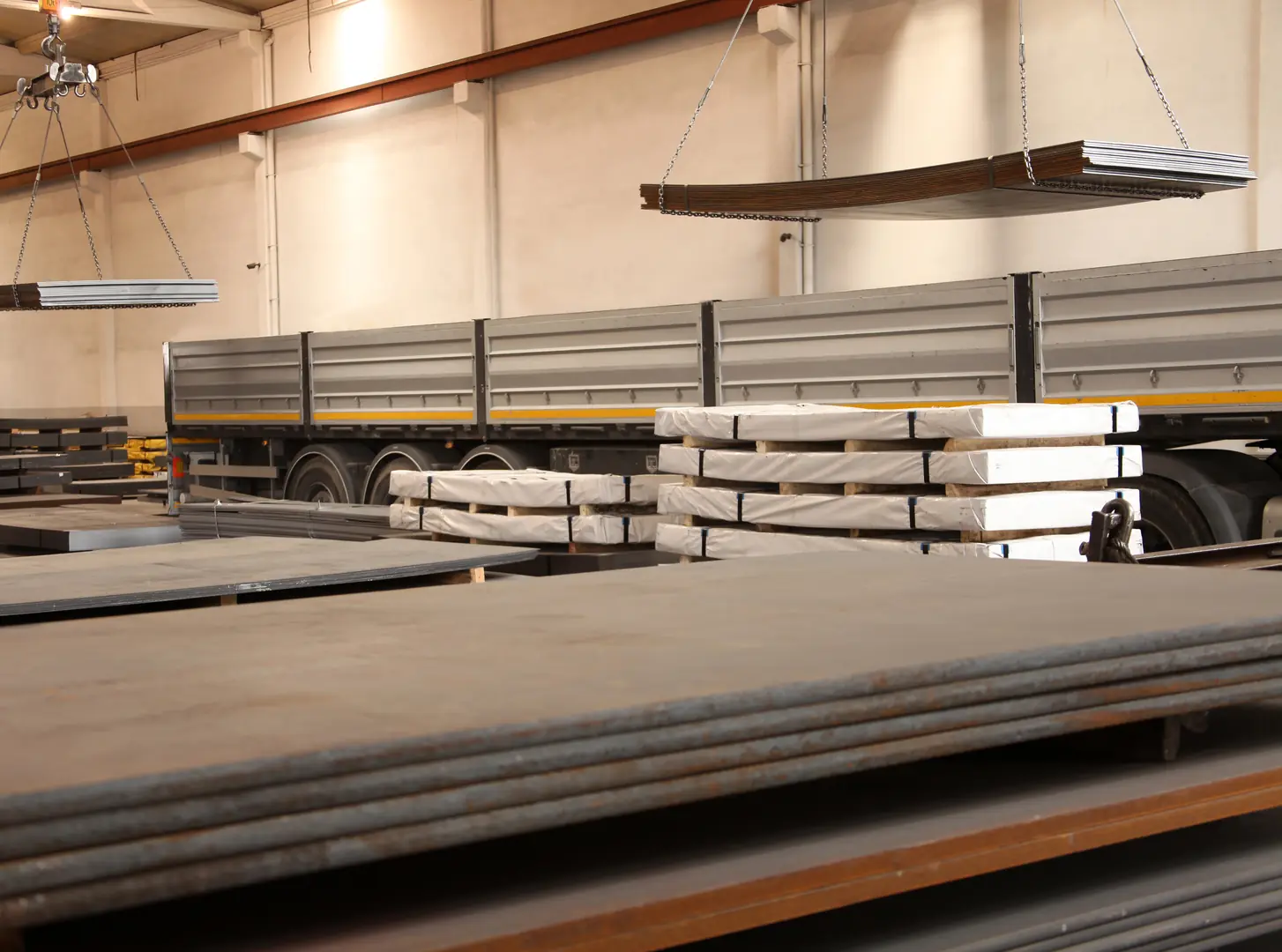
A Closer Look at Cutting Technologies
The initial cut is arguably the most critical step in fabrication. It sets the stage for everything that follows. At MFY, we emphasize that the choice of cutting technology directly impacts not only the dimensional accuracy of the final part but also the cost and speed of the entire project. Modern engineering demands precision that older methods simply can't provide. Investing in advanced technologies like laser and waterjet cutting isn't a luxury; it's a strategic necessity for any manufacturer looking to stay competitive. These systems minimize the heat-affected zone (HAZ)[^1], which is crucial for preserving the material's structural integrity and corrosion resistance. They also significantly reduce material waste through optimized nesting software, directly improving the bottom line. It's this commitment to precision engineering from the very first step that allows us to deliver components that meet the rigorous standards of our global clients.
Comparing Common Cutting Methods
To make an informed decision, it's helpful to compare the primary methods side-by-side. Each has its place, depending on the specific project requirements.
| Method | Best For (Thickness) | Precision | Speed | Ключевое преимущество |
|---|---|---|---|---|
| Laser Cutting | Thin to Medium (<15mm) | Очень высокий | Fast | Unmatched accuracy and clean edges. |
| Plasma Cutting | Medium to Thick (>15mm) | Хорошо | Very Fast | Excellent balance of speed and cost for thick plates. |
| Waterjet Cutting | Any Thickness | Extremely High | Медленнее | No heat distortion, ideal for sensitive alloys. |
What Are the Key Considerations When Forming Stainless Steel Plates?
Bending stainless steel without cracks? Its high strength and springback[^2] effect make forming a challenge. Proper technique and tooling are essential to avoid costly failures.
Key considerations for forming stainless steel include managing its high work-hardening rate and springback. Use powerful equipment, appropriate bend radii to prevent cracking, and lubricate tooling. Slower forming speeds often yield better, more consistent results.
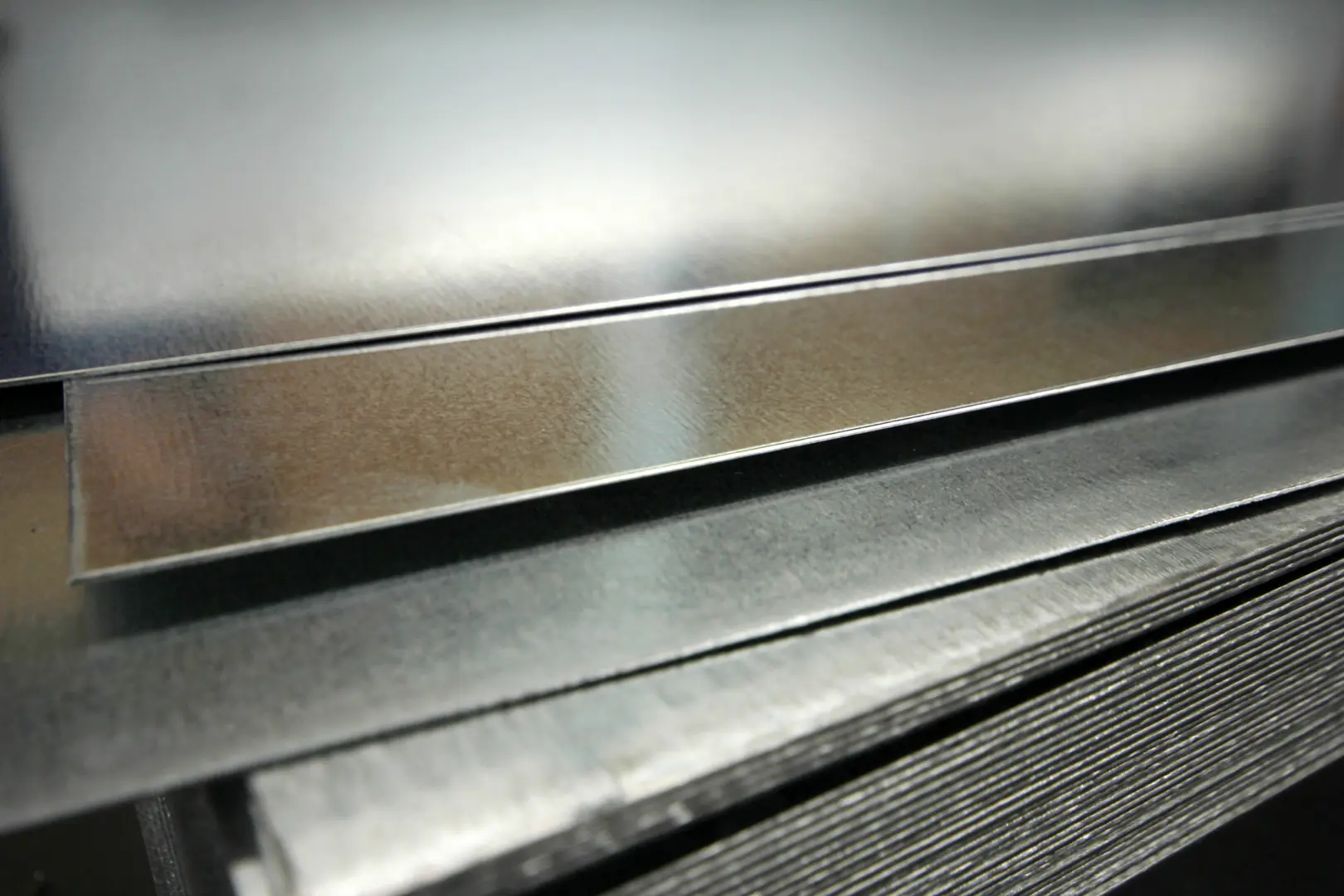
Understanding Material Behavior During Forming
Forming stainless steel is where art meets science. Unlike mild steel, stainless grades work-harden very quickly, meaning they become stronger and less ductile as they are bent. This property, combined with a higher degree of "springback," where the material partially returns to its original shape after bending, presents a significant challenge. I remember a client in the automotive sector who was struggling with inconsistent parts from their press brake. The issue wasn't the machine; it was a misunderstanding of the material. We worked with them to adjust their process, specifically by increasing the bend radius and slightly over-bending to compensate for springback. The change was immediate. This experience highlights a core principle: you must respect the material's unique properties.
Factors for Successful Forming
To achieve consistent and accurate bends, several factors must be carefully controlled.
- H3: Tooling and Equipment: Ensure your press brake has enough tonnage to overcome the material's strength. Tooling should be hardened and polished to reduce friction and prevent galling on the plate's surface.
- H3: Bend Radius: Always use a generous bend radius, especially for harder grades or thicker plates. A radius that is too tight is the primary cause of cracking along the outside of the bend.
- H3: Forming Speed: A slower, more controlled bending speed allows the material to flow more evenly, reducing stress and improving the accuracy of the final angle.
What Is the Best Way to Join Stainless Steel Plates?
Worried about weak or corroded welds? Joining stainless steel improperly can compromise the entire structure. The right welding technique is critical for strength and longevity.
The best way to join stainless steel plates is typically through TIG (Tungsten Inert Gas) welding for high-quality, precise joints, or MIG (Metal Inert Gas) welding for faster production. Proper filler material selection and post-weld cleaning are vital.

Selecting the Right Welding Process
The integrity of a fabricated structure often comes down to the quality of its welds. A poor weld is more than just a cosmetic flaw; it's a point of weakness and a potential site for corrosion to begin. In our MFY facilities, we use a range of welding processes, but our choice is always driven by the application's demands. For architectural elements or food-grade equipment where appearance and purity are paramount, TIG welding[^3] is our go-to method. Its precision and control produce clean, strong welds that require minimal finishing. For larger structural projects where speed is a factor, automated MIG welding systems provide the efficiency we need without sacrificing strength. The key insight here is the rise of automation in welding. Robotic welders deliver perfect consistency, reduce human error, and operate 24/7, dramatically increasing our capacity and ensuring every joint meets exact specifications. This technological advantage is fundamental to our ability to serve large-scale industrial projects globally.
TIG vs. MIG Welding at a Glance
| Характеристика | TIG (Tungsten Inert Gas) | MIG (Metal Inert Gas) |
|---|---|---|
| Процесс | Non-consumable tungsten electrode, separate filler rod. | Consumable wire electrode fed through the gun. |
| Quality | Highest quality, very precise and clean. | Good quality, stronger than stick welding. |
| Speed | Slower, more deliberate. | Much faster, suitable for production. |
| Best Use | Thin materials, visible joints, sanitary applications. | Thicker materials, structural fabrication. |
What Are Common Challenges in Stainless Steel Fabrication and How Can You Overcome Them?
Facing unexpected fabrication issues? Material distortion, tool wear, and contamination can derail projects and increase costs. Proactive strategies are needed to solve these common problems.
Common challenges include heat distortion during welding, rapid tool wear due to hardness, and surface contamination that compromises corrosion resistance. Overcome these with proper heat management, using durable tooling, and maintaining a clean work environment.

Proactive Solutions for Key Issues
Experience has taught me that the best way to handle fabrication challenges is to prevent them from happening in the first place. A reactive approach is always more costly. At MFY, our quality control isn't just a final inspection; it's a continuous process integrated into every step. We anticipate issues based on the material grade and project complexity and implement countermeasures from the start. For example, when welding large, thin panels, we use a specific clamping sequence and tack welding strategy to distribute heat and minimize warping. We also invest heavily in high-performance tooling and monitor wear rates closely to avoid sudden failures that could damage a valuable workpiece. This proactive mindset is crucial. It transforms fabrication from a series of potential problems into a predictable, reliable, and efficient manufacturing process, which is exactly what our clients need from their supply chain partners.
- H3: Managing Heat Distortion: Heat from cutting and welding causes expansion and contraction, which can lead to warping. To control this, use minimal heat input, employ proper clamping and bracing, and use a planned welding sequence (e.g., backstep welding) to distribute stress evenly.
- H3: Combating Tool Wear: Stainless steel's toughness is hard on drills, mills, and press brake tooling. Use tools made from cobalt or carbide, run machines at lower speeds with higher feed rates, and use ample coolant to dissipate heat and extend tool life.
- H3: Preventing Contamination: The passive layer that gives stainless steel its corrosion resistance is easily compromised. Always use tools dedicated solely to stainless steel to avoid iron contamination. Ensure work areas are clean and that post-fabrication cleaning removes any weld scale or heat tint.
What Are the Best Practices for Ensuring Quality and Precision in Stainless Steel Fabrication?
Want to guarantee top-quality results? Inconsistent fabrication can lead to product failure and reputational damage. Adhering to best practices ensures reliability and performance.
Best practices include using dedicated tools to prevent cross-contamination, selecting the correct grade for the application, implementing rigorous quality control checks at each stage, and investing in modern, precise fabrication technology and skilled operators.
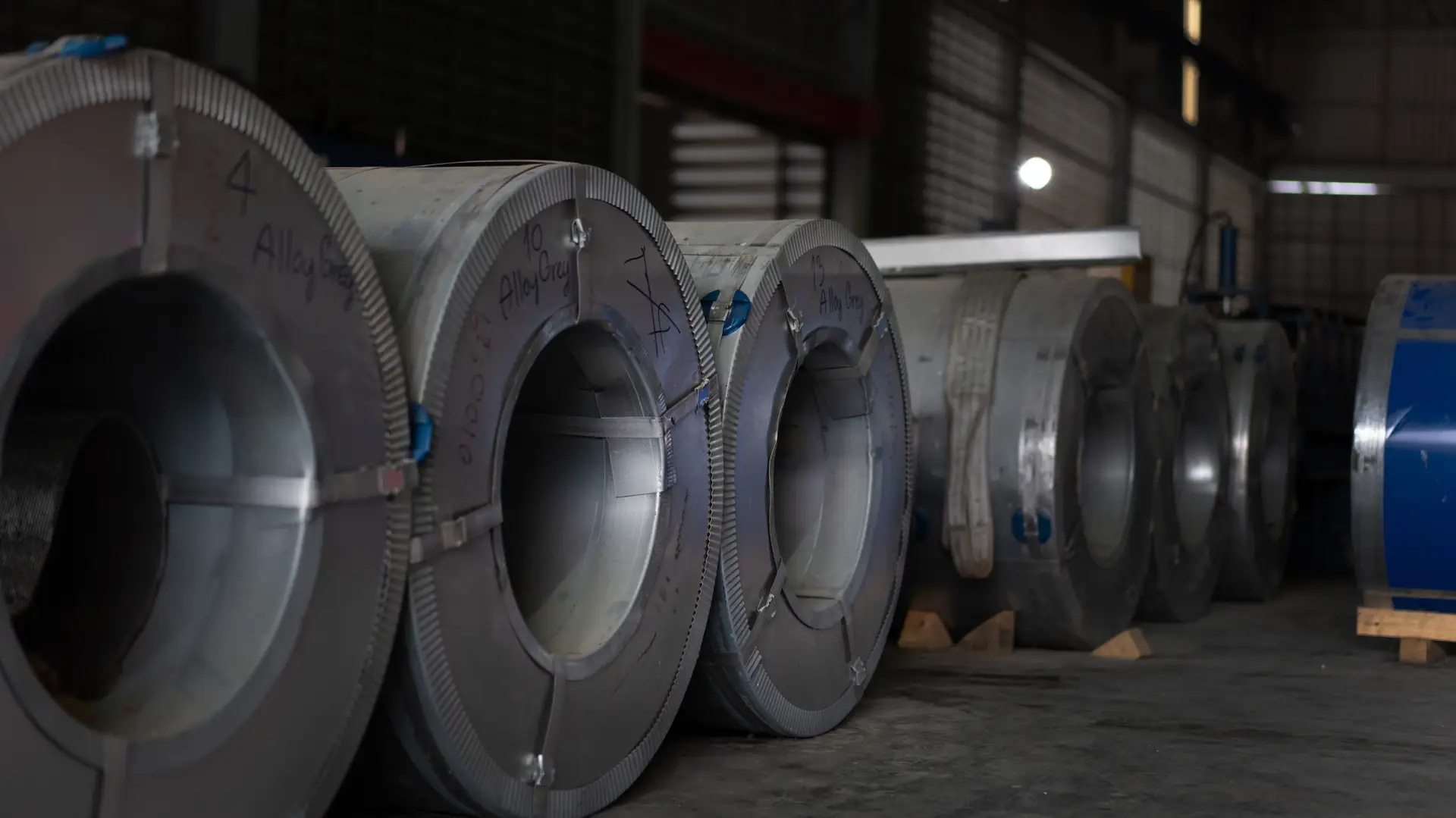
Building a Culture of Excellence
Ultimately, achieving consistent quality and precision comes down to a company's culture and systems. It’s not about a single machine or one skilled operator; it’s about an integrated approach that prioritizes excellence at every turn. At MFY, this philosophy is at the core of our operations. We empower our teams with continuous training on the latest techniques and technologies. Our quality assurance protocols are not just guidelines; they are strict, non-negotiable standards. We believe that investing in state-of-the-art fabrication capabilities, as highlighted in my earlier points about laser cutting and robotic welding, is fundamental. This investment positions us to lead in innovation and meet the evolving demands of sectors where precision is non-negotiable. For our clients, this means they receive a product that performs exactly as designed, with the reliability and durability that their own customers demand. It’s this commitment that builds trust and long-term partnerships.
A Checklist for Fabrication Success
- H3: Material Verification: Always confirm the grade and specifications of the stainless steel plate upon arrival.
- H3: Dedicated Tooling: Maintain a separate set of tools (brushes, grinders, clamps) exclusively for stainless steel to prevent iron contamination.
- H3: Process Control: Document and follow precise parameters for cutting speeds, forming pressures, and welding settings.
- H3: Continuous Inspection: Implement quality checks after each major step—cutting, forming, and joining—not just at the end.
- H3: Final Cleaning and Passivation: Properly clean and, if necessary, passivate the finished part to restore its full corrosion resistance.
Заключение
Mastering stainless steel fabrication is a blend of science, skill, and advanced technology. By focusing on precision in cutting, forming, and joining, and by proactively managing challenges, any manufacturer can produce high-quality, reliable components that meet the demands of today's most competitive industries.
У вас есть вопросы или нужна дополнительная информация?
Свяжитесь с нами, чтобы получить индивидуальную помощь и квалифицированный совет.
